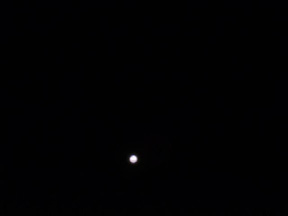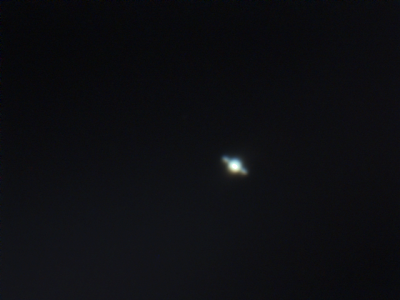So with Christmas over, and no telescope found under the tree, I decided its time to buy something more serious. Like a number of hobbies, you can spend an inordinate amount of money on equipment without trying really. In the end I opt to buy a Meade ETX 125 PE. This is partly because it currently has an offer which includes a number of additional lenses and filters which adds considerably to the value. It has on it a list of things I wanted which includes
- A GOTO system - after alignment you can tell it to go and locate a given star or planet.
- A computer interface allowing possible remote control of the telescope from a PC.
- A reasonable diameter mirror (127mm/5inch).
- The pack of eyepieces, which range from 40mm (47x mag) to 6.4mm (297x). There is also a barlow lens which allows the doubling of all above magnification.
- A built in equatorial wedge - this allow the telescope to track in a plane the same as the stars rotate in - so only one direction of track required. Normally it works in Alt-Az mode - which means it has two motors one that moves it around in a circle, and the other is up and down.
Wonder of wonders, after I get home and play with my new toy in the daylight, the skies clear as it gets dark and I can try it for real.
I tried just looking through it initially, and it was a lot clearer. Then I tried aligning it in auto mode. This is very clever, although it takes 2-3 minutes, which if like me you have to do a few times gets boring quickly. First it finds north, then it works out what the tilt and inclination is, and then it selects where it thinks two stars are it can align with. Well the first star it picked I had no idea - it could have been one of several. I found out later pressing the ? button tells you what star it is thinking it should be, and with stellarium running nearby, this helps a lot. I also found you can skip stars that might not be visible. It is rather sensitive to being interrupted while slewing though. Also realigning without power cycling seems to give rather odd results.
Also so far, the alignment isn't very exact, by picking two widely separated stars it seems to improve. You end up somewhere nearby what you're interested in, but its not always even in the field of view. I'll have to recheck I have input all the correct details.
Mars when viewed was a lot clearer, as were some other things I looked at. After that I spent a while installing the camera software and working out how to get that to go. Then I tried some imaging. This required the laptop close by so the USB cable would reach, and a bit of experimentation.
The results were not too bad, but not as good as I'd hoped - but all this was within a few hours of getting the kit out of the box, and learning how everything worked from scratch. So I guess I should carry on and see what can be done.
Mars was still readily accessible.

Saturn rose - but due to the location I'd picked it rose in between the branches of a tree, and there was intermittent cloud cover, so I was lucky to get anything.

I tried a deep sky object too - the Orion nebula in this case.

Not bad I suppose altogether for day 1.



No comments:
Post a Comment